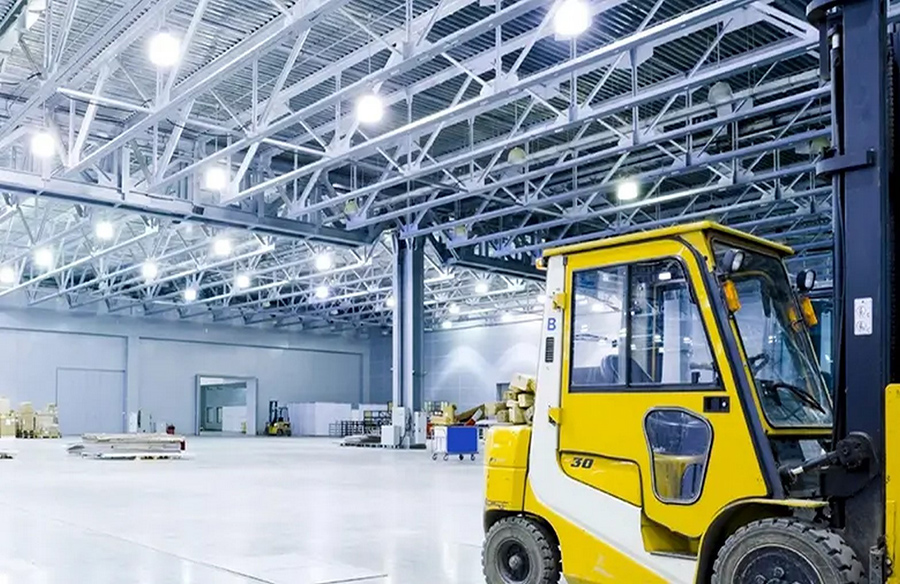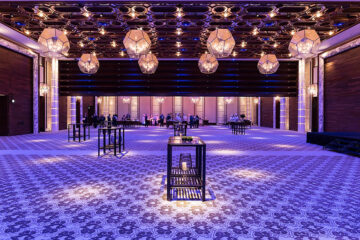Enlightened Efficiency: Revolutionizing Industrial Landscapes with Smart Lighting

In the dynamic realm of industrial and factory environments, the significance of lighting transcends conventional purposes. The advent of smart lighting solutions marks a pivotal shift, ushering in unparalleled control, efficiency, and sustainability. As industries globally seek to streamline operations, curtail energy consumption, and elevate workplace safety, the integration of intelligent lighting systems stands out as a strategic necessity. This exploration delves into the multifaceted ways in which smart lighting is reshaping the landscapes of industries and factories.
Energy Efficiency
Traditionally recognized for substantial energy consumption, industrial spaces are undergoing a transformation with the adoption of smart lighting solutions. LED fixtures, a cornerstone of this evolution, boast significantly lower energy consumption than their traditional counterparts. The incorporation of intelligent controls, featuring motion sensors and occupancy detectors, ensures lights are active solely when and where required, resulting in substantial energy savings.
Smart lighting systems elevate energy efficiency further by providing real-time energy monitoring and analytics. This empowers facility managers with insights into consumption patterns, facilitating informed decisions to optimize energy usage. Beyond reducing carbon footprints, this approach yields substantial long-term cost savings.
Automated Lighting Controls
In the dynamic operations of industrial settings, the ability to automate lighting controls emerges as a game-changer. Smart lighting seamlessly integrates with building management systems, allowing centralized control across entire facilities. Automated controls enable the scheduling of lighting scenarios based on production schedules, occupancy, or specific operational needs.
For instance, in manufacturing plants with varying work shifts, smart lighting can adapt brightness levels and color temperatures to match the time of day. This not only ensures optimal working conditions but also contributes to employee well-being and productivity.
Adaptive Lighting
Industrial spaces host diverse tasks, from precision assembly to heavy machinery operation. Adaptive lighting solutions address the need for tailored illumination in different work zones. Smart fixtures equipped with sensors adjust lighting parameters based on changes in ambient light, occupancy, or specific activities.
In areas requiring detailed tasks, such as quality control or intricate assembly, bright and focused lighting is crucial. Conversely, during non-operational periods, lighting can be dimmed to conserve energy. Adaptive lighting not only enhances visibility and safety but also optimizes energy consumption according to specific zone requirements.
Predictive Analytics and Maintenance
Equipped with advanced analytics, smart lighting systems offer a proactive maintenance approach. By collecting and analyzing data on individual fixture performance, these systems predict potential issues before escalation. Predictive maintenance alerts enable facility managers to address concerns promptly, minimizing downtime and ensuring continuous operation.
This shift from reactive to preventive maintenance extends the lifespan of lighting fixtures, contributing to overall operational efficiency. Predictive maintenance integrates seamlessly into broader facility management strategies, fostering a resilient and reliable industrial infrastructure.
Employee Well-being and Productivity
Beyond operational and energy considerations, smart lighting significantly contributes to the well-being and productivity of industrial workers. Well-designed lighting, with adjustable color temperatures and brightness levels, positively impacts circadian rhythms, promoting better sleep patterns among shift workers. This is particularly relevant in industries with round-the-clock operations.
Dynamic lighting systems, mimicking natural light conditions, enhance alertness and reduce fatigue, translating to increased productivity and decreased error rates. Prioritizing employee well-being through thoughtful lighting design creates a conducive and supportive work environment, ultimately leading to higher job satisfaction and performance.
Remote Monitoring and Maintenance
A standout feature of smart lighting solutions is the capability to monitor and manage systems remotely. Particularly beneficial in large industrial complexes, where fixture access for maintenance is challenging, smart lighting provides real-time diagnostics. Remote monitoring enables proactive interventions, minimizing downtime, and ensuring long-term cost savings by extending fixture lifespan.
The ability to remotely update firmware and software ensures the lighting system remains current with the latest features and security patches.
Safety Enhancements
Smart lighting plays a pivotal role in enhancing safety within industrial environments. Motion sensors and occupancy detectors can be integrated into emergency lighting systems, ensuring well-lit evacuation routes during power outages or emergencies. In areas with heavy machinery or potential hazards, smart lighting provides visual cues and warnings through color-coded indicators or flashing lights.
Furthermore, intelligent lighting systems reduce glare and shadows, minimizing the risk of accidents and injuries. By creating well-lit and visually comfortable spaces, smart lighting supports overall safety and well-being in industrial settings.
Compliance with Industry Standards and Certifications
Industries and factories adhere to specific standards and certifications related to lighting quality, energy efficiency, and environmental impact. Smart lighting solutions facilitate compliance by offering precise light level control, energy monitoring, and adherence to lighting quality metrics.
Meeting industry standards not only aligns with regulatory requirements but also establishes the organization as a responsible and conscientious entity within the industry. Certifications for sustainable and eco-friendly practices become more attainable with the implementation of smart lighting solutions, reinforcing a commitment to environmental stewardship.
Integration with IoT and Industry 4.0
Smart lighting serves as a cornerstone for the Industry 4.0 revolution, emphasizing connectivity and data-driven decision-making. Integration with the Internet of Things (IoT) positions smart lighting within a larger ecosystem encompassing sensors, actuators, and other smart devices. This interconnected infrastructure allows data exchange and insights, leading to improved operational efficiency and informed decision-making.
In smart factory settings, lighting systems can communicate with production equipment, adjusting illumination levels based on manufacturing process status. This integration fosters a responsive and adaptive industrial environment, positioning smart lighting as a foundational element in the Industry 4.0 paradigm.
Conclusion
In conclusion, smart lighting solutions are reshaping industries and factories into more efficient, sustainable, and connected spaces. From energy savings and automated controls to adaptive lighting and enhanced safety features, the benefits are manifold. As industries embrace digital transformation, smart lighting emerges as a crucial component in optimizing operational processes, reducing costs, and creating safer and more productive work environments. Enabling enlightened efficiency, smart lighting signifies not just an evolution but a revolution in industrial landscapes.














